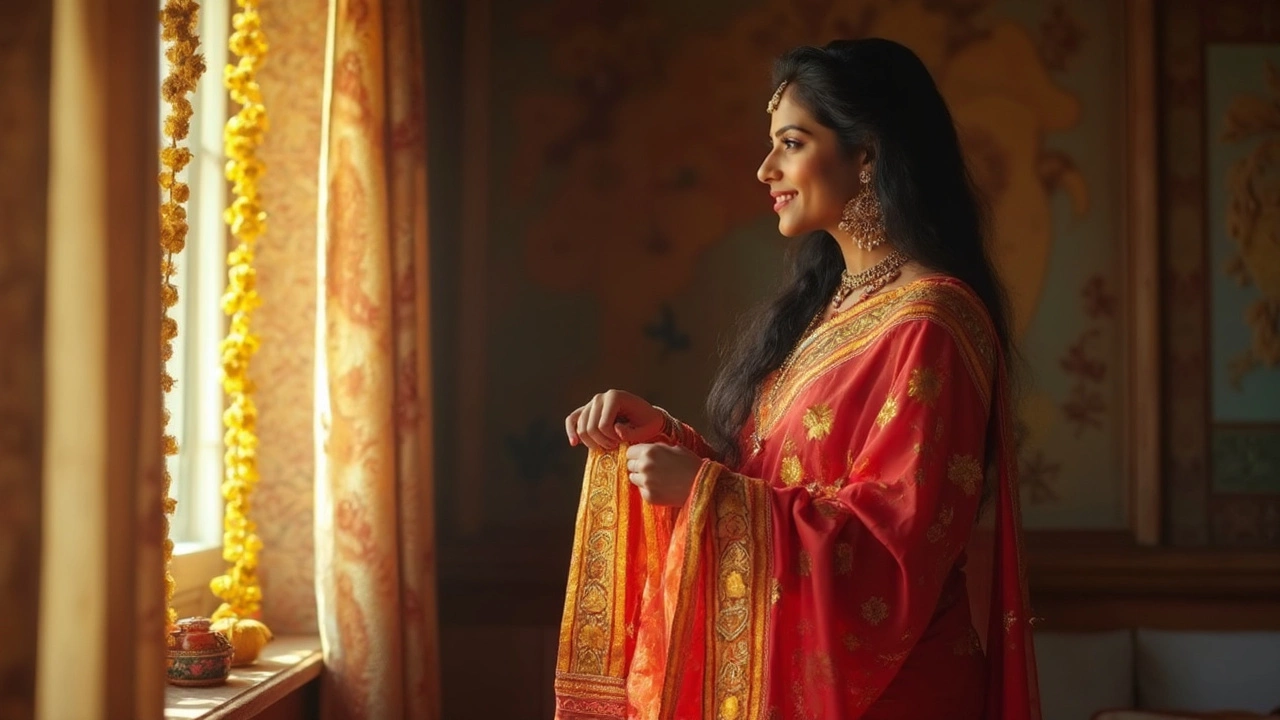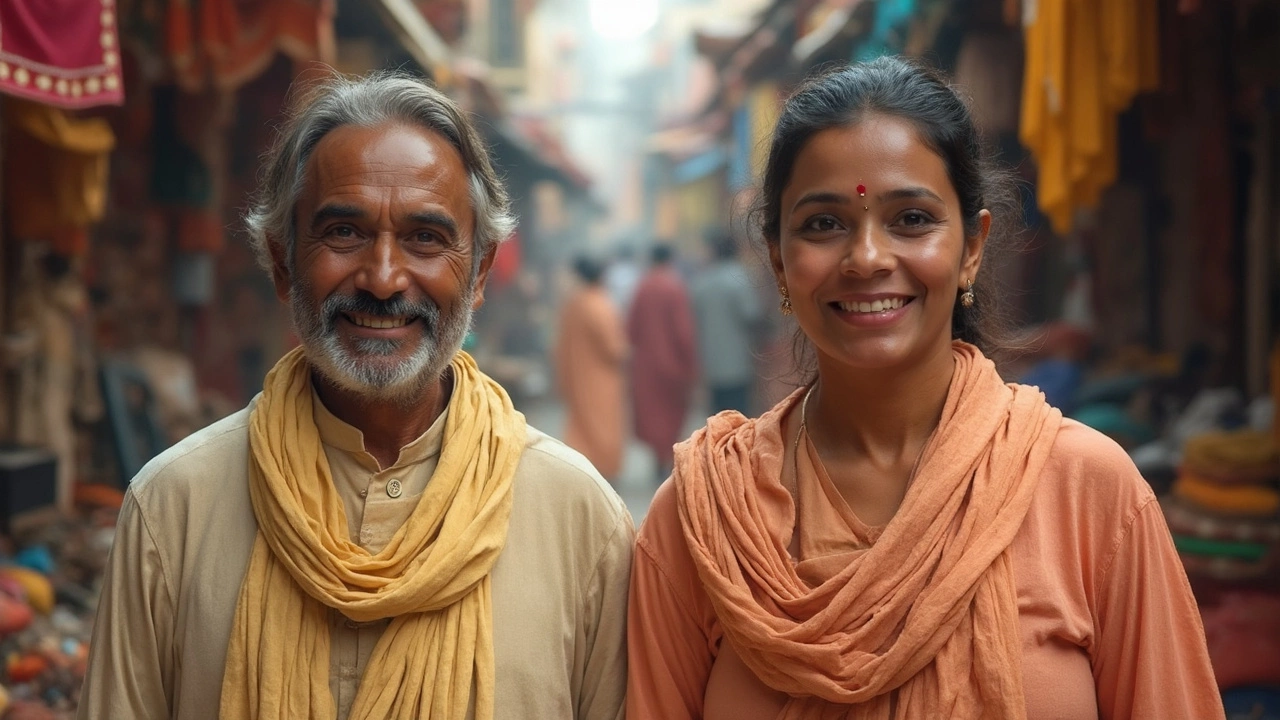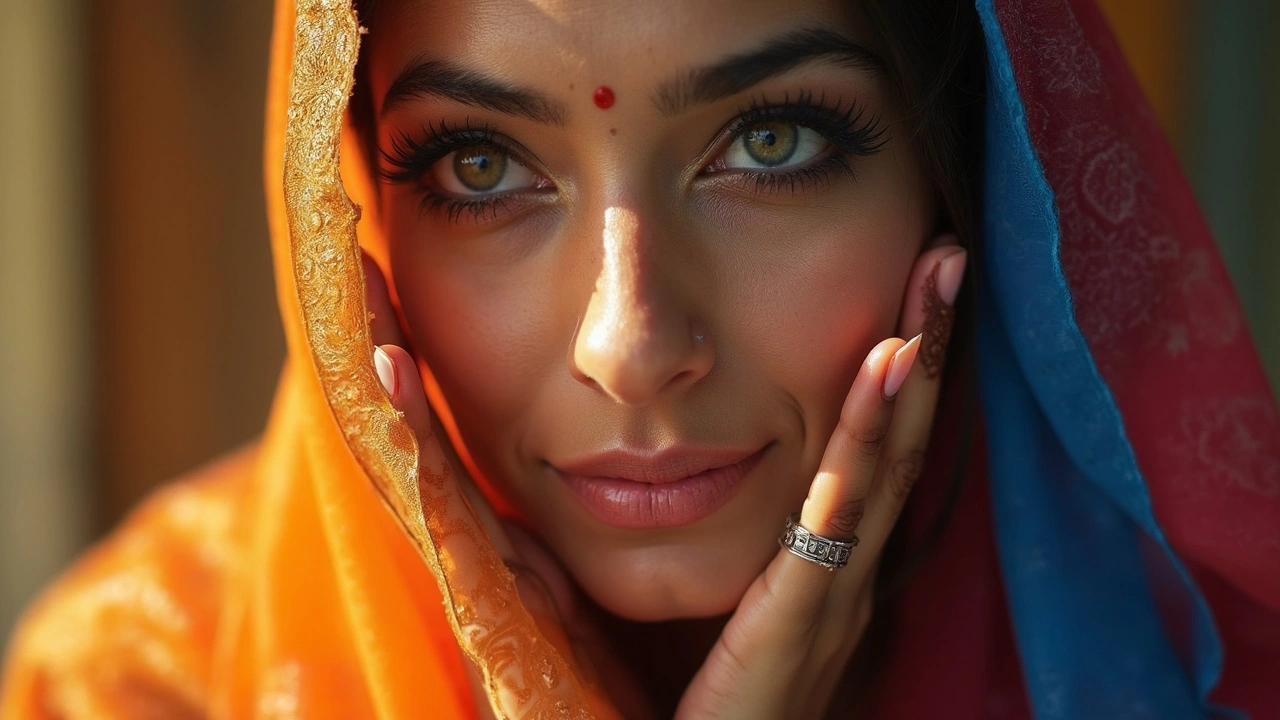
Few people realize that certain colors can add years to your look way faster than any wrinkle cream can erase. Pulling on the wrong shade doesn’t just clash with your outfit—it can highlight every fine line, shadow, or puffiness in your face. It’s not about whether you love red or blue. It’s about how that color plays against your skin, your undertones, and even your energy.
Color is sneaky. Some shades instantly make skin look drained or washed out, exaggerating dark circles or making red patches shout. Ever thrown on a mustard sweater and wondered why you suddenly look tired and sallow? You're not alone. The colors closest to your face—think scarves, makeup, and collars—are especially important for this reason. Choose smartly, and you can literally look brighter and more awake in seconds.
- The Science Behind Aging Colors
- The Worst Offenders: Shades That Age You
- How Skin Tone and Undertones Change the Game
- Wardrobe and Makeup Hacks for a Youthful Look
- Picking Colors that Compliment (Instead of Age) You
The Science Behind Aging Colors
If you’ve ever looked in the mirror and thought you looked a bit more tired in some clothes or makeup, there’s real science behind that. The age-adding effect of color isn’t a myth—it’s about how light bounces off your face and interacts with your natural skin tone and undertones. Colors can reflect light onto your skin in ways that make you look either healthier or more drained.
When a color doesn’t work with your skin, it can actually create shadows or highlight redness, lines, and dark circles. For example, wearing too dark or overly cool shades can cast an unflattering tint, especially if you have warm undertones. Researchers from the Journal of Cosmetic Science have even shown that certain clothing colors can affect the way others judge your age and energy in just seconds.
- Aging colors like mustard yellow, dull beige, muddy browns, or certain gray-greens tend to wash out most complexions.
- The right colors—think soft blues, jewel tones, and well-matched neutrals—help make skin look smoother and more even.
- Lighting is key. What looks fine indoors under soft light can be brutal in daylight, so always check how a new color works in different settings.
People with different undertones (cool, warm, or neutral) will find that certain shades instantly bring out sallowness, redness, or dullness. That’s why there’s no single color that ages everyone; it all comes down to you and your natural coloring.
Check out this quick table of how common offending shades interact with skin undertones:
| Color | Effect on Warm Undertones | Effect on Cool Undertones |
|---|---|---|
| Mustard Yellow | Makes skin look yellow or sallow | Overwhelms, looks harsh |
| Dull Beige | Washes out, highlights shadows | Drains life from face |
| Dark Olive | Accentuates redness | Makes complexion look muddy |
Even if you love a “bad” shade, strategic use can help. Just keep it away from your face and focus on wearing more flattering colors near your skin—especially if you're worried about looking older or tired.
The Worst Offenders: Shades That Age You
Some colors just don’t get along with your skin—no matter how trendy they look on Instagram. The worst culprits are the ones that drain warmth or highlight flaws, making your skin look tired or washed out. When it comes to aging colors, a handful of shades always seem to make the top of the list.
First up: mustard yellow. Sure, it’s bold, but it’s not forgiving. Mustard tends to make even golden skin tones look dull, and it brings out any sallowness in paler faces. Next, we have earthy, muddy browns and olive greens. If your skin has pink or neutral undertones, these colors can give you a grayish look, almost like the life’s been zapped out.
Pure black sounds classic, but too much black, especially near the face, can be harsh. It emphasizes every fine line and shadow. People over 40 often say black suddenly makes their skin look older overnight. The same goes for some shades of gray, especially cooler slate or blue-grays. Instead of looking sleek, you might just look tired.
Dusty pastels, like light mauve, lavender, or pale peach, seem innocent but can age you fast. They have barely-there pigments, and when you match that with maturing skin’s natural loss of color, you get a really washed-out effect.
- Mustard yellow: Saps warmth from skin, exaggerates sallowness.
- Muddy brown & olive green: Make complexions look lifeless, especially with pink or neutral undertones.
- Pure black: Highlights wrinkles, under-eye bags, and sharpens features harshly.
- Cool grays: Bring out dullness and shadows in the face.
- Dusty pastels: Make mature skin look faded and washed out.
If you need proof, check out how department store lighting makes everyone in those tan or brown fitting rooms look at least ten years older. Or try wearing a pale mauve top without makeup. Odds are, you’ll find yourself reaching for concealer just to bring warmth back into your face. So, while you don’t need to toss every dark or muted shirt, save them for when you can accessorize with a scarf or bold lip color—that quick fix keeps you from landing in the "oldest looking" club.

How Skin Tone and Undertones Change the Game
Ever notice how your friend looks incredible in cool blue, but you just look… meh? It all comes down to skin tone and undertones. Both play a key role in how colors help or hurt your look, especially when it comes to looking fresh versus aged.
Your actual skin tone is easy to spot—fair, medium, olive, or deep. But the bigger secret is in your undertone, that underlying tint you see just under your skin. You’re probably either cool (with pink, red, or blue), warm (yellow, golden, or peachy), or neutral (a mix). Why does this matter for aging? The wrong color fights your undertone, making shadows pop, accentuating redness, and even making you look like you need a nap.
Finding your undertone isn’t rocket science. Check the veins on your wrist. Blue veins? You’re likely cool. Greenish veins? Pretty sure you’re warm. If you can’t decide, you might be neutral.
- Cool undertones shine in jewel tones like sapphire, emerald, and ruby. Pale pastels or anything too yellow can drain the face, making lines and spots more noticeable.
- Warm undertones usually look younger in earthy shades—think coral, camel, warm olive, and classic red. Icy blues and bright whites are more likely to create harsh contrasts, calling out every little imperfection.
- Neutral undertones win big with balanced hues like teal, true red, or dusty pink. These don’t fight your natural coloring and keep your skin looking rested.
Here’s a quick cheat sheet you can save for picking the right shades by your skin tone and undertone combo:
| Undertone | Avoid | Embrace |
|---|---|---|
| Cool | Warm yellows, oranges | Deep blues, cool reds |
| Warm | Icy blue, pure white | Corals, camel, peach |
| Neutral | Neon shades | Teal, soft rose, classic navy |
If you find yourself looking older in the mirror after wearing one of your favorite aging colors, there’s a good chance it’s a mismatch with your undertones. Switching up the shade—sometimes just by a little—can take years off your look. Simple as that.
Wardrobe and Makeup Hacks for a Youthful Look
Picking the right clothes and makeup can do as much for you as a good night’s sleep. Let’s get super practical—here’s how you can use your wardrobe and makeup bag to skip the "aging" look that comes with the wrong aging colors.
- Keep Neutrals Soft: Harsh blacks or mustard yellows might sound classic, but they’re notorious for draining color from your face, especially as you get older. Choose soft neutrals like heather gray, navy, dove, or taupe. These shades are way more forgiving and help skin look less washed out.
- Blush Tones Are Your Friend: Pinkish, peach, or rosy tones mimic what a healthy complexion looks like, so these shades near your face give you a youthful boost—think scarves, tops, and even lipstick. They counteract dullness and add a natural glow.
- Say ‘No’ to Muddy Colors: Olive, mustard, deep brown, or anything too muted can make most skin tones look more tired. Instead, pick clear bright shades—cobalt blue, fresh teal, soft coral—which help reflect light onto your face (instant fresh effect).
- Shine a Light (Literally): Shiny or satin fabric reflects more light, making skin look fresher. Avoid all-matte everything right near your face, as it can exaggerate lines and dryness.
When it comes to makeup, here are some go-to tricks that really work with facial treatments and changing skin:
- Switch to Creams: Cream blush and highlighters sink into the skin for a plumper, glowy finish. Powder can just sit in lines and look chalky.
- Go Easy on Liner: Skip dark, heavy eyeliner which can make eyes look smaller and drag your whole face down. Choose softer shades like brown or gray and smudge for a bit of lift.
- Brow Game: Fuller brows instantly signal youth. If yours are sparse, fill them in gently—nothing too blocky or sharp.
- Lipstick Matters: Deep, dark purples or browns? Unless you’re going for drama, they can make lips look thinner and older. Pick a soft berry or peach for a natural, fuller vibe.
Quick cheat sheet? The best wardrobe tips for a fresher look usually come back to light, bright colors reflecting against your face, and skipping anything drab or overly dark. Play with swatches. If a shirt makes you look tired in natural light, swap it. And don’t fall for "classic" colors if they zap your natural glow.
| Color/Feature | Effect on Appearance |
|---|---|
| Soft Blush Pink | Brightens complexion |
| Cream Blush Makeup | Plumps and lifts skin |
| Matte Black | Creates harsh shadows, enhances lines |
| Shiny/Satin Tops | Reflects light onto face |
| Muted Browns/Olives | Casts dullness, ages skin |
| Fuller Brows | Signals youth and vitality |
These simple swaps can seriously change the way you look—in every selfie and in the mirror the next morning.

Picking Colors that Compliment (Instead of Age) You
The right shades can genuinely take years off your look—no needles or lasers involved. When talking about aging colors, the real secret is knowing how your personal skin tone and undertones play off what you wear. And it goes way beyond just picking "flattering" colors out of thin air.
Start by figuring out if you have warm, cool, or neutral undertones. Look at your veins—if they seem bluish or purple, you probably have cool undertones; greenish suggests warm; and a mix means neutral. This matters because the colors that make your skin glow tend to match or gently contrast with your undertones.
Here's what works for each type:
- Cool undertones: Jewel tones like sapphire, emerald, and amethyst look amazing. Avoid mustard yellows and super-bright oranges—they exaggerate shadows and fine lines.
- Warm undertones: Earthy shades like camel, coral, or olive will do wonders. Steer clear of icy pastels and pure white, which can wash out warm skin.
- Neutral undertones: You get the best of both worlds but don’t go full neon or choose colors that are super dull. Try blush, jade, or teal.
According to a real study done at the University of St Andrews, people rated individuals as looking healthier and more youthful when they wore colors that matched their undertones—even without makeup or extra treatments. Sometimes, it's that easy.
Still feeling lost? The trickiest part is often finding your go-to basics. Black is classic, but it’s also notorious for deepening eye bags and fine lines, especially as we age. If you love black, wear it with a colorful scarf or lipstick close to your face to bounce a little life back into your complexion. Navy, charcoal, or soft taupe usually do a better job of making skin look smooth versus harsh old-school black.
Here’s a handy cheat sheet of wardrobe tips for picking youth-boosting colors:
- Keep softer, mid-tone colors near your face—think powder blue or blush pink, not dirty olive or tomato red.
- Choose a lipstick or blush in your skin’s natural “flush” tone, especially on makeup-free days. This instantly makes your face look fresher.
- For basics, swap bright white for creamy ivory, which flatters almost everyone.
- If you can’t resist bold colors, keep them away from your face or mix them with fresh, youthful shades.
One more hack for shoppers: try on clothes in natural daylight if you can. Yellowy indoor lighting changes how color looks on skin—and can trick you into thinking a shade works when it really doesn't. Next time you’re tempted by a so-called "classic" shade, double check how it makes your skin feel. If you look perkier and healthier, you’re on to something. If you look tired or washed out, toss it back. Simple as that.
 Hair Care
Hair Care